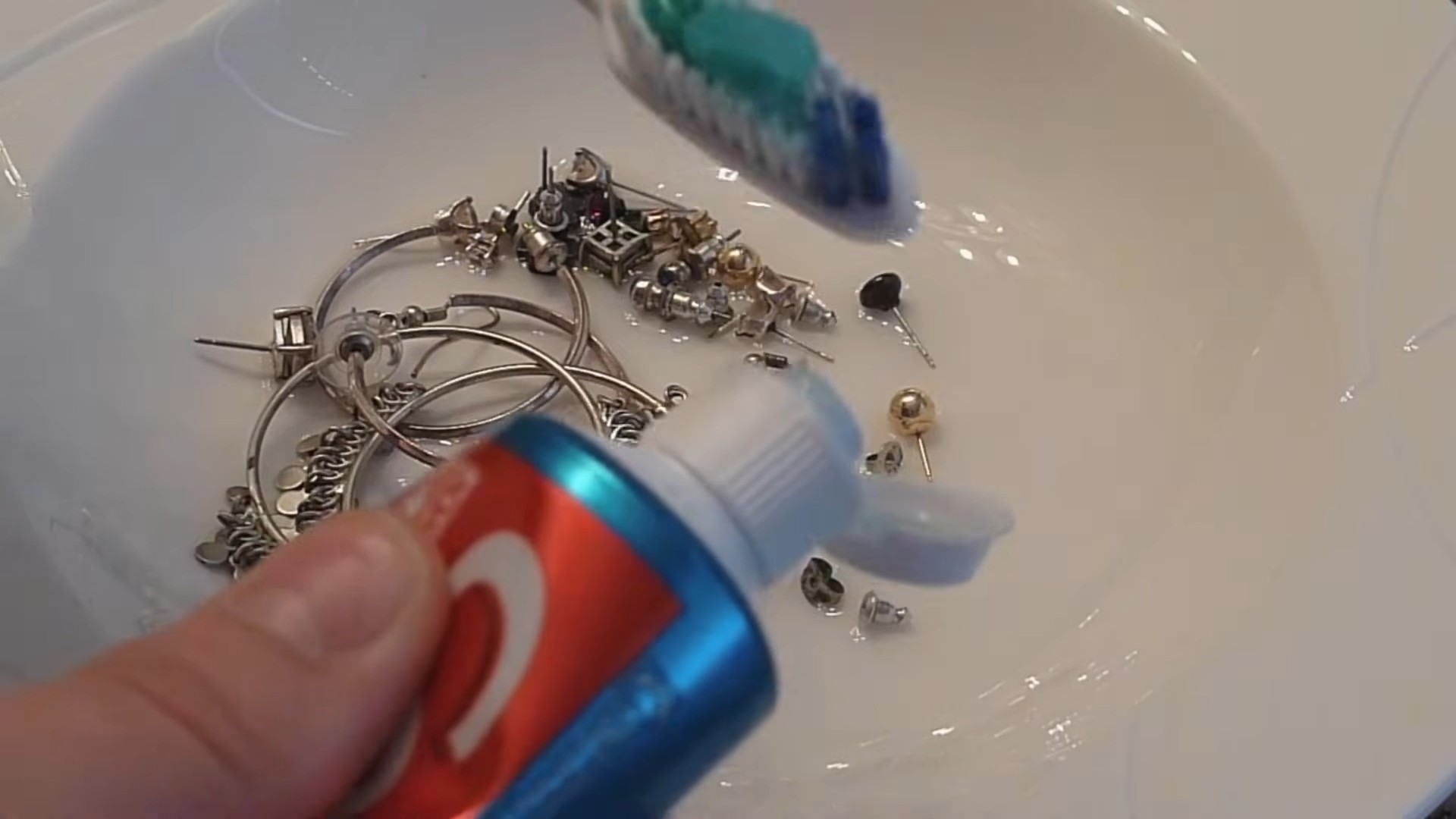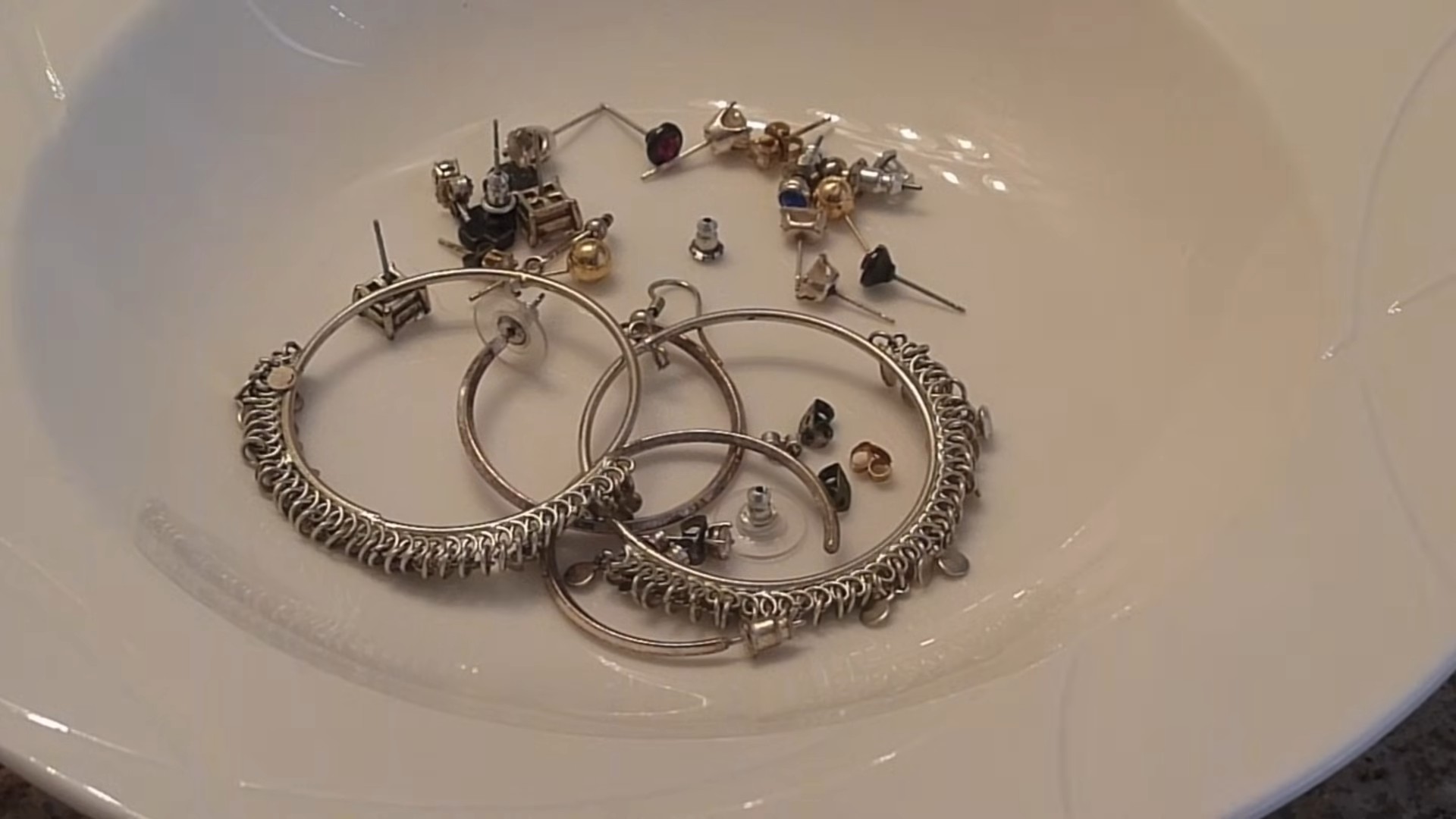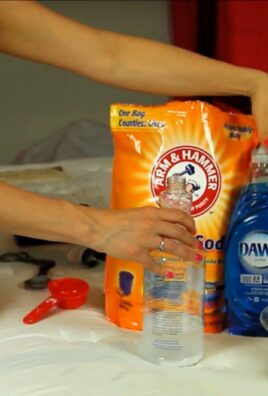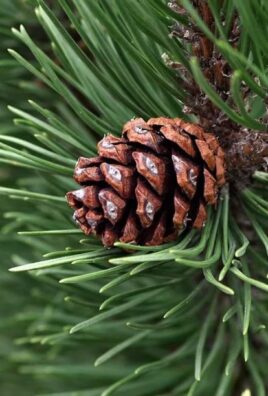Clean Jewelry with Toothpaste: Who knew achieving sparkling, like-new jewelry could be as simple as reaching for your toothpaste? I’m always amazed by the clever DIY solutions that can be found right in our homes, and this one is a true gem (pun intended!). For centuries, people have sought ways to keep their precious adornments gleaming, from using specialized polishing cloths to elaborate cleaning rituals. But let’s be honest, who has the time or budget for all that?
That’s where this brilliant hack comes in. Over time, jewelry accumulates dirt, oils, and everyday grime, dulling its shine and making it look less than its best. This is especially true for pieces we wear frequently. Instead of resorting to harsh chemicals or expensive professional cleaning, I’m going to show you how to clean jewelry with toothpaste, a gentle yet effective method that will restore its brilliance in minutes. Not only is it incredibly easy, but it’s also a cost-effective way to keep your favorite pieces looking their absolute best. Ready to unlock the secret to sparkling jewelry? Let’s dive in!

DIY Jewelry Cleaning with Toothpaste: Sparkle Like New!
Hey everyone! I’m so excited to share this super easy and effective way to clean your jewelry using something you probably already have in your bathroom: toothpaste! I know, it sounds a little weird, but trust me, it works wonders. This method is perfect for cleaning silver, gold, and even some gemstone jewelry. However, always be cautious and test on a small, inconspicuous area first, especially with delicate or porous stones. Let’s get started!
What You’ll Need:
* Toothpaste: Plain white toothpaste (not gel) is best. Avoid anything with whitening agents or abrasive particles, as these can scratch softer metals and stones. Think classic, basic toothpaste.
* Soft-bristled toothbrush: An old toothbrush works perfectly! Make sure it’s clean and the bristles are soft to avoid scratching.
* Warm water: For rinsing.
* Soft cloth: A microfiber cloth is ideal for drying and polishing.
* Small bowl: To hold the warm water.
* Optional: Cotton swabs for cleaning intricate details.
Choosing the Right Toothpaste: A Word of Caution
Before we dive in, let’s talk toothpaste. The key here is *gentle*. You want a toothpaste that cleans without being abrasive. Gel toothpastes are a no-go because they often lack the mild abrasive properties needed for cleaning. Whitening toothpastes are also risky because they contain ingredients designed to scrub away stains, which can be too harsh for delicate jewelry. Look for a plain, white toothpaste that lists ingredients like hydrated silica or calcium carbonate as mild abrasives. If you’re unsure, test a tiny bit on the back of a piece of jewelry before cleaning the whole thing. Better safe than sorry!
Step-by-Step Cleaning Guide
Okay, now for the fun part! Here’s how I clean my jewelry using toothpaste:
1. Prepare Your Workspace: Lay down a clean towel or cloth on your work surface to protect it and prevent your jewelry from rolling away. Gather all your supplies: toothpaste, toothbrush, warm water, soft cloth, and bowl.
2. Apply Toothpaste: Squeeze a small amount of toothpaste (about the size of a pea) onto the soft-bristled toothbrush. You don’t need a lot!
3. Gently Scrub: Gently scrub the jewelry with the toothbrush. Focus on areas that are tarnished or dirty. Use small, circular motions. Be extra careful around delicate stones or settings. For intricate designs, use a cotton swab dipped in toothpaste to reach those hard-to-reach spots.
4. Rinse Thoroughly: Once you’ve scrubbed the jewelry, rinse it thoroughly under warm running water. Make sure to remove all traces of toothpaste. I like to hold the jewelry under the water and gently rub it with my fingers to ensure all the toothpaste is gone.
5. Dry and Polish: Use a soft, clean cloth to dry the jewelry completely. A microfiber cloth works best for polishing and removing any water spots. Gently buff the jewelry to restore its shine.
6. Inspect and Repeat (If Necessary): Take a close look at your jewelry. If there are still areas that need cleaning, repeat steps 2-5. Sometimes, stubborn tarnish requires a second application.
Cleaning Different Types of Jewelry
While this method is generally safe for most jewelry, here are some specific tips for different materials:
* Silver: Toothpaste works great on silver! It helps remove tarnish and restore its shine. Just be gentle and avoid abrasive toothpastes.
* Gold: Gold is generally more durable than silver, but it can still get dirty. Toothpaste can help remove dirt and grime and bring back its luster.
* Diamonds: Diamonds are pretty tough, so toothpaste is usually safe to use. However, avoid getting toothpaste on the metal setting if it’s a softer metal like silver.
* Gemstones: This is where you need to be extra careful! Some gemstones are porous and can be damaged by toothpaste. Avoid using toothpaste on pearls, opals, turquoise, emeralds, and other delicate stones. If you’re unsure, it’s best to consult a professional jeweler. For harder gemstones like sapphires and rubies, you can use toothpaste sparingly, but always test a small area first.
* Costume Jewelry: Costume jewelry is often made of plated metals, which can be easily damaged by abrasive cleaners. I generally avoid using toothpaste on costume jewelry. Instead, I recommend using a mild soap and water solution.
Dealing with Stubborn Tarnish
Sometimes, tarnish is really stubborn and doesn’t come off easily with just one application of toothpaste. Here are a few tips for dealing with stubborn tarnish:
* Make a Paste: Mix a small amount of toothpaste with a few drops of water to create a paste. Apply the paste to the tarnished area and let it sit for a few minutes before scrubbing gently.
* Use a Baking Soda Paste: For really stubborn tarnish, you can try making a paste with baking soda and water. Baking soda is a mild abrasive that can help remove tarnish. Be extra careful when using baking soda, as it can scratch softer metals.
* Soak in Warm Water: Before cleaning, soak the jewelry in warm water for a few minutes to loosen the tarnish.
Preventing Tarnish
Prevention is key! Here are a few tips to help prevent your jewelry from tarnishing in the first place:
* Store Jewelry Properly: Store your jewelry in a dry, airtight container or pouch. This will help prevent it from being exposed to air and moisture, which can cause tarnish.
* Remove Jewelry Before Showering or Swimming: Water, soap, and chlorine can all damage your jewelry. Remove your jewelry before showering, swimming, or doing household chores.
* Avoid Contact with Chemicals: Perfume, hairspray, and other chemicals can also damage your jewelry. Apply these products before putting on your jewelry.
* Clean Regularly: Clean your jewelry regularly to remove dirt and grime. This will help prevent tarnish from building up.
Important Considerations
* Always test on an inconspicuous area first. This is especially important for delicate or porous stones.
* Use a soft-bristled toothbrush. Abrasive brushes can scratch your jewelry.
* Rinse thoroughly. Make sure to remove all traces of toothpaste.
* Dry completely. Water can cause tarnish.
* If you’re unsure, consult a professional jeweler. They can provide expert advice on how to clean your specific jewelry.
When to Call in the Professionals
While this DIY method is great for general cleaning, there are times when it’s best to leave it to the professionals. If your jewelry is heavily tarnished, has delicate stones, or is particularly valuable, it’s best to take it to a professional jeweler for cleaning. They have the tools and expertise to clean your jewelry safely and effectively. Also, if you notice any damage to your jewelry, such as loose stones or broken clasps, it’s best to have it repaired by a professional.
Enjoy Your Sparkling Jewelry!
And there you have it! A simple and effective way to clean your jewelry using toothpaste. I hope you found this guide helpful. Now go forth and make your jewelry sparkle! Remember to be gentle, patient, and always test on a small area first. Happy cleaning!

Conclusion
So, there you have it! Cleaning jewelry with toothpaste isn’t just a quirky internet hack; it’s a genuinely effective, affordable, and convenient way to restore the sparkle to your precious pieces. We’ve explored the science behind why it works, the simple steps to follow, and the precautions to take to ensure you’re treating your jewelry with the care it deserves.
Why is this DIY trick a must-try? Because it empowers you to take control of your jewelry care without relying on expensive professional cleaning services or harsh chemicals. Think about the time and money you’ll save! No more trips to the jeweler, no more waiting days to get your favorite necklace back, and no more worrying about damaging delicate stones with abrasive cleaners. You likely already have toothpaste in your bathroom, making this a readily available solution for dull, tarnished jewelry.
But the benefits extend beyond mere convenience. This method is surprisingly gentle, especially when you use a non-gel, non-whitening toothpaste. It’s a fantastic option for cleaning everyday jewelry that accumulates dirt, oils, and grime from daily wear. Imagine the satisfaction of seeing your rings, earrings, and bracelets shine like new after just a few minutes of effort.
Looking for variations? Consider using a soft-bristled toothbrush specifically designated for jewelry cleaning. This will allow you to reach intricate details and crevices more effectively. For heavily tarnished silver, you might let the toothpaste sit for a slightly longer period (no more than 10 minutes) before rinsing. You can also experiment with different types of toothpaste, but always test a small, inconspicuous area first to ensure compatibility. Remember, the key is to be gentle and patient.
Beyond toothpaste, a baking soda paste (mixed with water) can be used for tougher stains on durable metals like stainless steel. However, avoid using baking soda on softer metals like gold or silver, as it can be abrasive. Another alternative is a mixture of dish soap and warm water, which is excellent for removing everyday dirt and grime.
The most important thing is to assess the type of jewelry you’re cleaning and choose the appropriate method. Delicate gemstones like pearls, opals, and emeralds require special care and should generally be cleaned with a soft cloth and mild soap. Avoid using toothpaste on these stones, as it can damage their delicate surfaces.
We are confident that you’ll be amazed by the results of cleaning jewelry with toothpaste. It’s a simple, effective, and economical way to keep your jewelry looking its best. So, grab your toothpaste, gather your jewelry, and get ready to witness the transformation!
Now, we want to hear from you! Have you tried this DIY trick before? What were your results? Do you have any tips or variations to share? We encourage you to try cleaning jewelry with toothpaste and share your experience in the comments below. Your feedback will help other readers discover the magic of this simple yet powerful cleaning method. Let’s build a community of sparkling jewelry enthusiasts!
Frequently Asked Questions (FAQ)
Q: Is it safe to clean all types of jewelry with toothpaste?
A: While cleaning jewelry with toothpaste is generally safe for many types of jewelry, it’s not suitable for everything. Avoid using toothpaste on soft or porous gemstones like pearls, opals, emeralds, turquoise, and amber. The abrasive nature of toothpaste can scratch or damage these delicate stones. Also, be cautious when cleaning plated jewelry, as toothpaste can eventually wear away the plating. Solid gold, silver, platinum, and stainless steel jewelry are generally safe to clean with toothpaste, but always test a small, inconspicuous area first.
Q: What kind of toothpaste should I use?
A: The best type of toothpaste to use for cleaning jewelry is a plain, non-gel, non-whitening toothpaste. Avoid toothpaste with abrasive ingredients like baking soda or charcoal, as these can scratch delicate surfaces. Look for a toothpaste that is specifically formulated for sensitive teeth, as these tend to be less abrasive. Gel toothpastes are generally less effective at cleaning jewelry and may leave a residue.
Q: How often should I clean my jewelry with toothpaste?
A: The frequency of cleaning depends on how often you wear your jewelry and how dirty it gets. For everyday jewelry, cleaning once a month is usually sufficient. For jewelry that you wear less frequently, cleaning every few months may be enough. Avoid over-cleaning your jewelry, as this can eventually wear away the finish or damage delicate stones.
Q: Can I use an electric toothbrush to clean my jewelry with toothpaste?
A: While an electric toothbrush might seem like a good idea for cleaning jewelry, it’s generally not recommended. The vibrations of the electric toothbrush can be too harsh for delicate jewelry and may cause damage. A soft-bristled toothbrush is a much gentler and more controlled option.
Q: What if my jewelry has stubborn tarnish that toothpaste can’t remove?
A: If your jewelry has stubborn tarnish that toothpaste can’t remove, you can try a few other methods. For silver jewelry, you can use a silver polishing cloth or a silver cleaning solution. For gold jewelry, you can try soaking it in a mixture of warm water and mild dish soap. You can also take your jewelry to a professional jeweler for cleaning.
Q: How do I prevent my jewelry from tarnishing in the first place?
A: There are several things you can do to prevent your jewelry from tarnishing. Store your jewelry in a dry, airtight container or pouch when you’re not wearing it. Avoid exposing your jewelry to harsh chemicals like chlorine, bleach, and hairspray. Remove your jewelry before swimming, showering, or exercising. Clean your jewelry regularly with a soft cloth to remove dirt and oils.
Q: My jewelry has intricate details. How can I clean those areas with toothpaste?
A: For jewelry with intricate details, use a soft-bristled toothbrush to gently scrub the toothpaste into the crevices. You can also use a cotton swab or a toothpick to reach tight spots. Rinse the jewelry thoroughly with warm water to remove all traces of toothpaste.
Q: Can I use toothpaste to clean costume jewelry?
A: Be very cautious when cleaning costume jewelry with toothpaste. Costume jewelry is often made with inexpensive materials and delicate plating that can be easily damaged by abrasive cleaners. If you choose to clean costume jewelry with toothpaste, test a small, inconspicuous area first and use a very gentle touch. It’s often safer to clean costume jewelry with a soft cloth and mild soap.
Q: What should I do if I accidentally get toothpaste on a gemstone that shouldn’t be cleaned with it?
A: If you accidentally get toothpaste on a gemstone that shouldn’t be cleaned with it, rinse the gemstone immediately with warm water. Use a soft cloth to gently wipe away any remaining toothpaste. If you’re concerned about potential damage, take the jewelry to a professional jeweler for cleaning and inspection.
Q: After cleaning, my jewelry seems dull. What did I do wrong?
A: If your jewelry appears dull after cleaning, it could be due to a few reasons. You might not have rinsed the jewelry thoroughly enough, leaving a residue of toothpaste. Make sure to rinse the jewelry under warm running water until all traces of toothpaste are gone. Another possibility is that the jewelry was heavily tarnished, and the toothpaste wasn’t strong enough to remove all the tarnish. In this case, you might need to try a stronger cleaning method or take the jewelry to a professional jeweler. Finally, ensure you are using a soft cloth to dry and buff the jewelry after cleaning. A microfiber cloth works best for this.





Leave a Comment